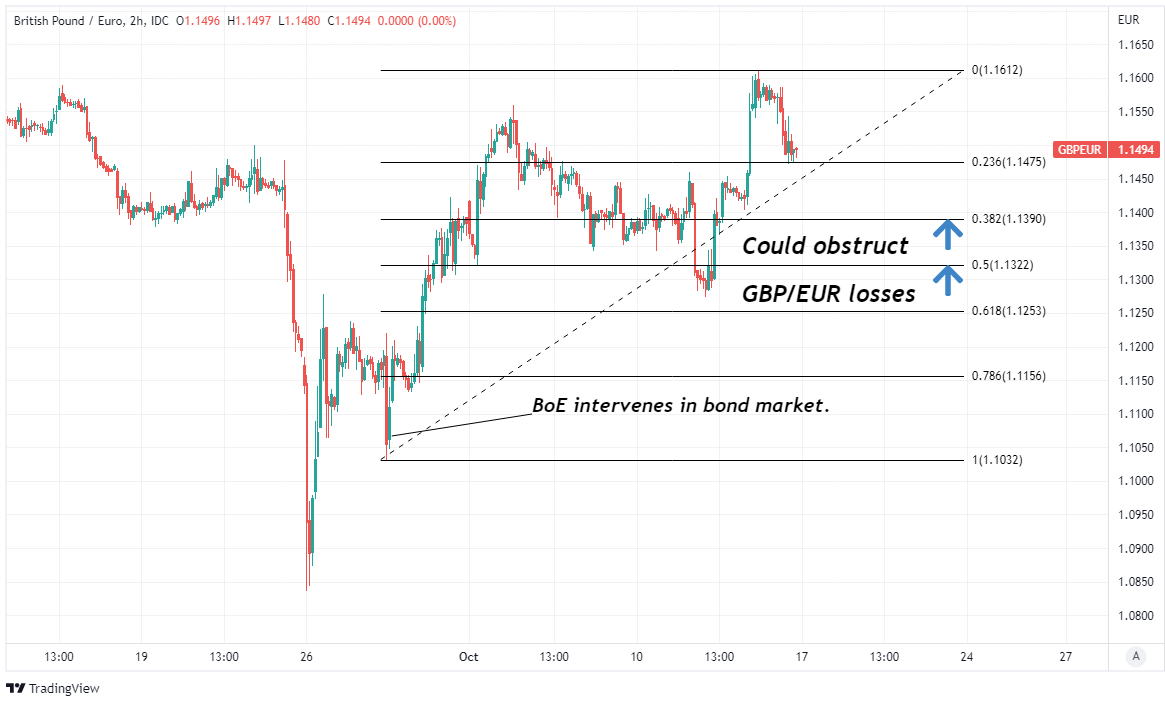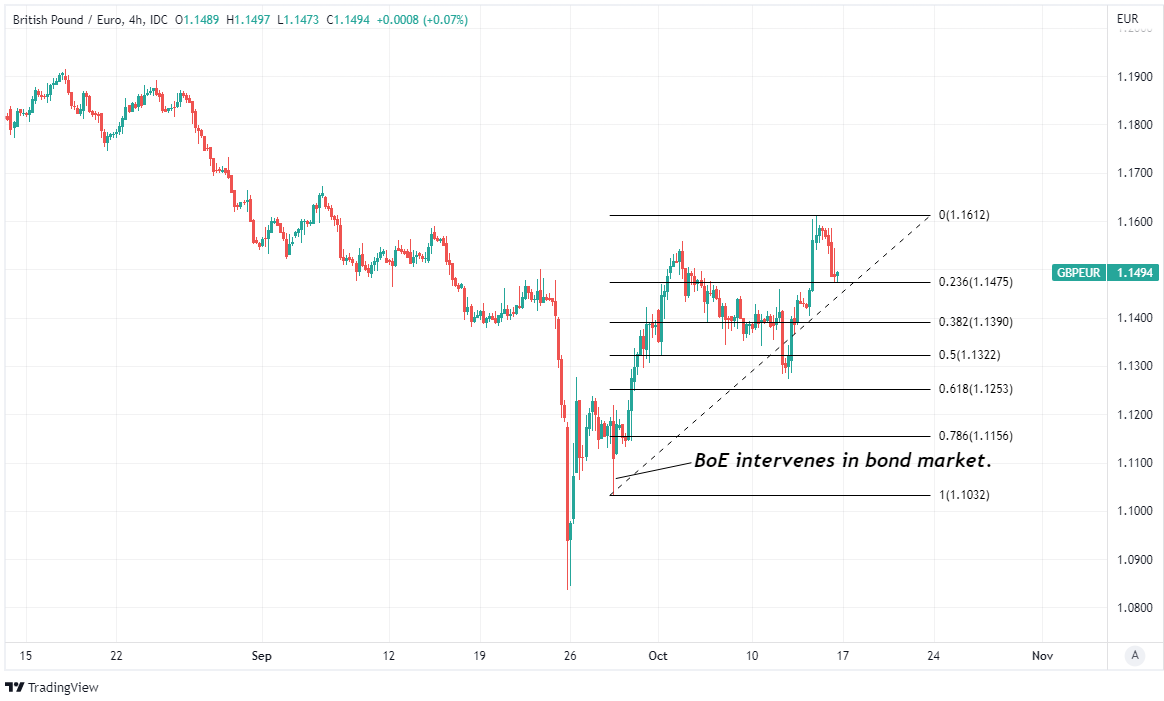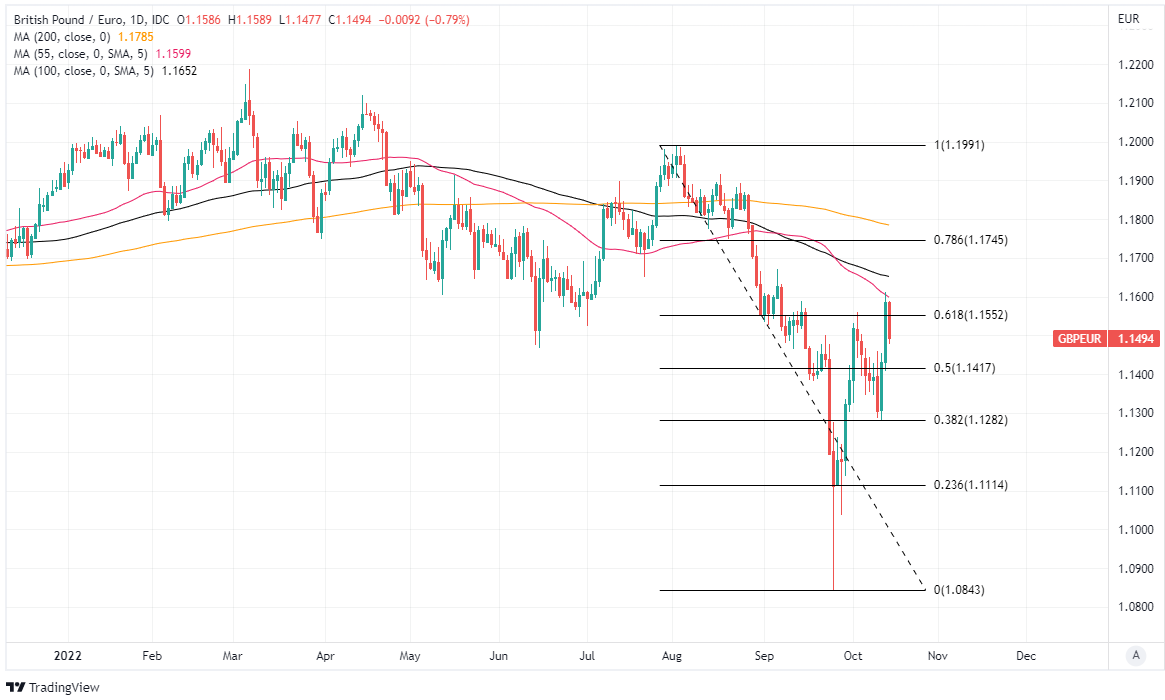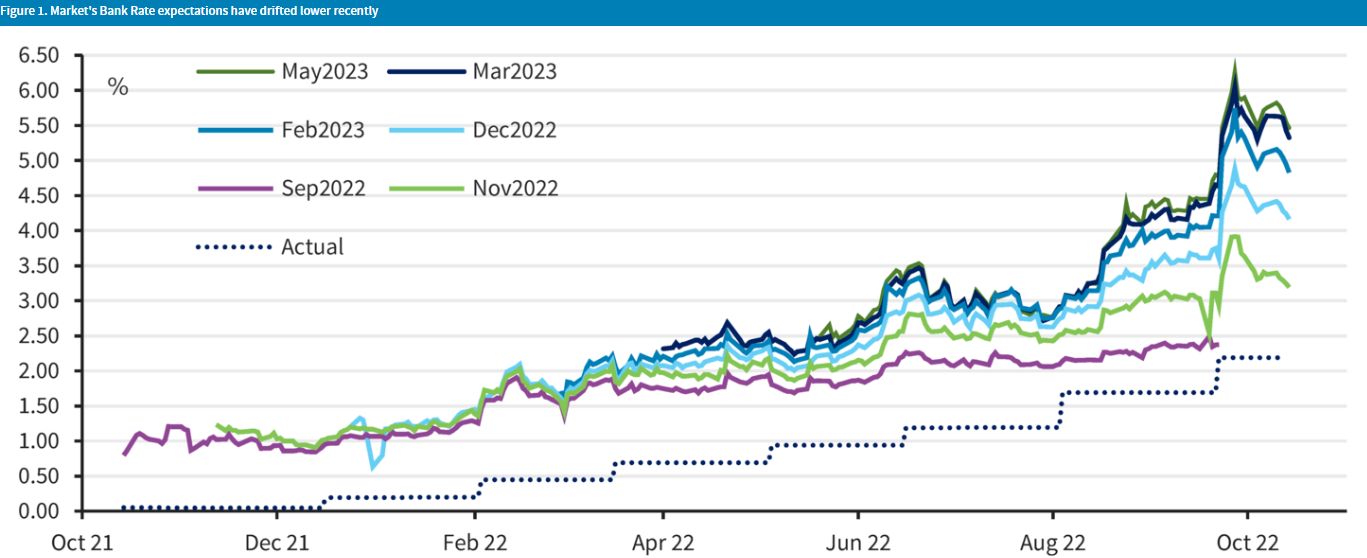GBP/EUR Week Ahead: All Eyes on Westminster Circus
- Written by: James Skinner
-
- GBP/EUR recovery could be running out of road
- Political instability & uncertainty posing risks
- Policy farces aggravate wounds to economy
- Compound risk stemming from bond market
- UK inflation data & BoE rate outlook in focus

Image © Adobe Images
The Pound to Euro exchange rate rose to one-month highs last week but could now struggle to advance much further in the days ahead and may even be at risk of fresh selling as the Westminster Circus descends again into the kind of farce most typical of one of those old Carry On films.
Sterling rose sharply last week amid speculation that HM Treasury could set aside some of the spending commitments announced in the late September budget but enters the new week with political instability and uncertainty once again high on the agenda.
This after widespread reports at the weekend (an example) suggesting that the less directly electable elements of the governing party are seeking to rewrite the party rule book in order to force the latest Prime Minister out of office, or to otherwise force a resignation of her newly-acquired post.
“Against this backdrop, it is worth trying to plot (sic) where any such an unprecedented coup d’état would lead us, or rather descend us into,” says Dr Savvas Savouri, chief economist and partner at Toscafund Asset Management, a London-based hedge fund with around $4BN under management.
“If you imagine what we have just experienced is as serious a Sterling and Gilt crisis as one could get, wait and see what would happen in this alt-reality of Truss being defenestrated the way Johnson was by “their” party,” Savouri wrote in an early October economic briefing titled “stupid is as stupid does.”
 Above: Pound to Euro rate shown at 2-hour intervals with Fibonacci retracements of late September recovery indicating possible areas of technical support for Sterling. Click image for closer inspection.
Above: Pound to Euro rate shown at 2-hour intervals with Fibonacci retracements of late September recovery indicating possible areas of technical support for Sterling. Click image for closer inspection.
All of the above is a negative development for Sterling and in part because for many and most it will mean that real and important problems like shortage of domestic energy supply will be pushed out of sight and out of mind for the duration of the latest pantomime.
The government and Westminster parties might welcome that, however, given that the above referenced economic risks are at least partly the result of governmental policy choices having been weaponised by a foreign government and then used against the economy and country.
“No amount of intervention or the unsealing of oil reserves will remedy the situation. They simply do not have as much spare resources as they need – that is the whole point. They need to understand this eventually,” President Vladimir Putin told the Russian Energy Week International Forum just last week.
“The fact is that aggressive promotion of the green agenda, which, of course, needs support, as I said, but it should be done right, so, the aggressive promotion of this agenda, including in the euro area, has led to underinvestment in the global oil and gas sector,” he added immediately after.
The farce in and around the government does nothing to address the slow motion economic car crash playing out in the background but has ensured in numerous respects that the forthcoming economic downturn will be even deeper and more damaging than it otherwise might have been.
“The required 4.5% drop in real non-interest expenditure between 2021/22 and 2025/26 would dwarf the 2.3% reduction implemented between 2009/10 and 2013/14,” says Samuel Tombs, chief UK economist at Pantheon Macroeconomics.
 Above: Pound to Euro rate shown at 4-hour intervals with Fibonacci retracements of late September recovery indicating possible areas of technical support for Sterling. Click image for closer inspection.
Above: Pound to Euro rate shown at 4-hour intervals with Fibonacci retracements of late September recovery indicating possible areas of technical support for Sterling. Click image for closer inspection.
“Given the outlook for substantial fiscal tightening, we think markets haven’t gone far enough in revising down their expectations for Bank Rate,” Tombs and colleagues wrote in a Monday research briefing.
Tombs estimated on Monday that the recent increase in government bond yields and impact on financing costs will mean HM Treasury now needs to find expenditure savings equal to £71BN in order to comply with a self-imposed fiscal rule seeking to ensure that debt-to-GDP falls in three years time.
Any and all expenditures saved will be a direct loss to UK GDP and the level of expenditure cuts that would be required for the government to meet its objectives is large enough to mean it will make the period of ‘austerity’ that followed the financial crisis look like a period of fiscal largesse.
“Markets believe the BOE was right to force Truss to U-turn from the wrong kind of fiscal loosening for the supply side to letting growth slump while not dealing with the supply side fiscally; ensuring a lower GDP ceiling, and plummeting long-run socio-political and macro-stability,” writes Michael Every, a global strategist at Rabobank, in a Monday market commentary.
“From today, the BOE will have to prove it won’t step in to save markets. Gilt yields are going back up to test its belief in QT,” Every adds.
While much ink will inevitably be spilled over Westminster this week, other things are equally as important including the market response to Monday’s anticipated end of Bank of England (BoE) intervention in the bond market.
 Above: Pound to Euro rate shown at daily intervals with Fibonacci retracements of August fall and selected moving-averages indicating possible areas of technical resistance for Sterling. Click image for closer inspection.
Above: Pound to Euro rate shown at daily intervals with Fibonacci retracements of August fall and selected moving-averages indicating possible areas of technical resistance for Sterling. Click image for closer inspection.
The BoE has bought almost £20BN of government bonds since September 28 and an incident that was described by Governor Andrew Bailey on Saturday as a “liquidity event,” which led the BoE to intervene by the Wednesday following Friday, 23 September’s fiscal event.
Sterling has appeared to benefit from that intervention and so could be vulnerable to any fresh or further liquidity strains should they emerge, although arguably the highlight of the week ahead is Tuesday’s release of inflation figures for the month of September.
These figures are doubly important now the headwinds faced by the economy have grown because the data will determine the extent to which the downturn is aggravated by the BoE, which appears very likely on course to lift borrowing costs to levels not seen since before the 2008 crisis.
“When the MPC meet next, it will be confronted with a credit crunch it had not foreseen, which all else equal should call for a moderation in the pace of monetary tightening,” say Fabrice Montagne and Abbas Khan, both economists at Barclays, writing in a Friday research briefing.
“Relative to analysts (available for quarters only) our call for a 75bp hike in November then 50bp hike in December (ie, Bank Rate hitting 3.5% by year end) is in the middle of consensus,” Khan and Montagne also wrote.












